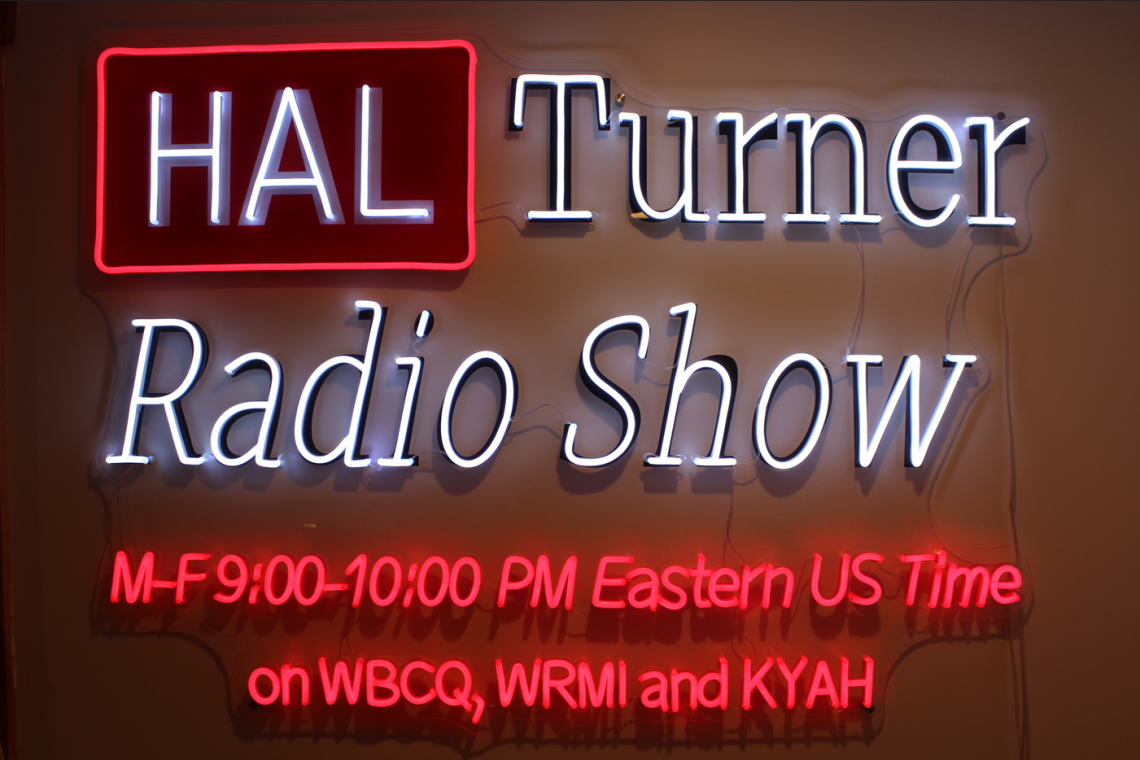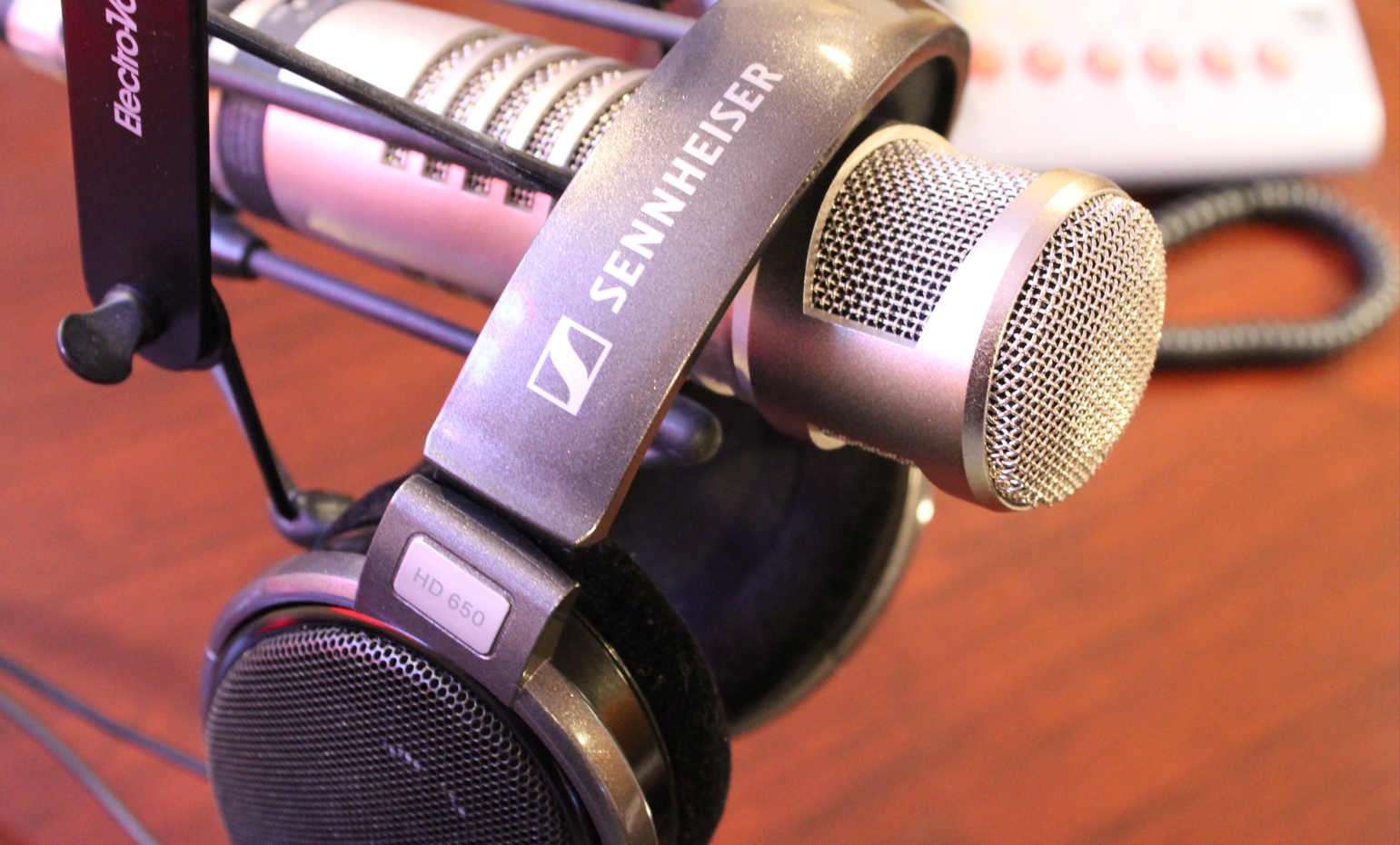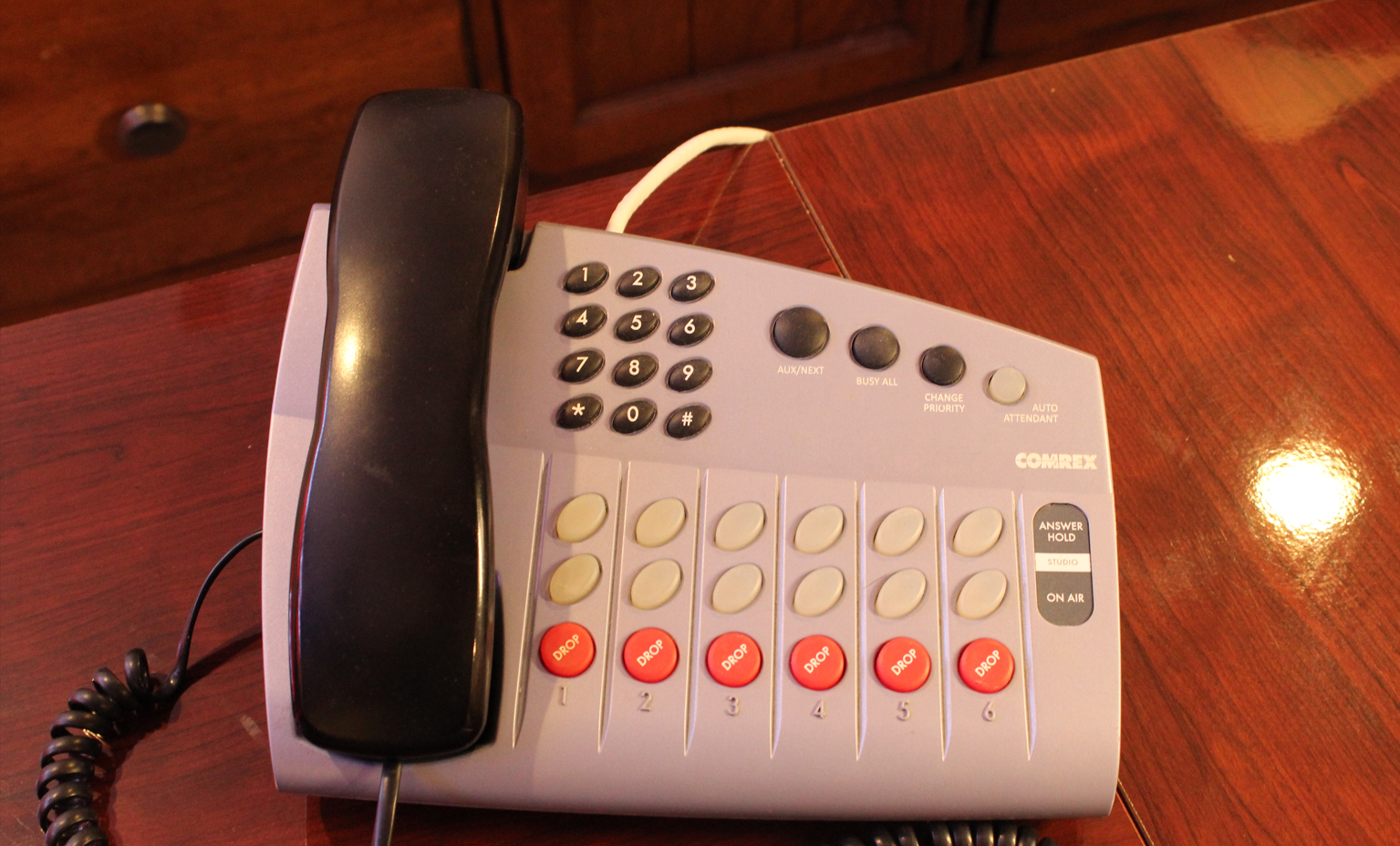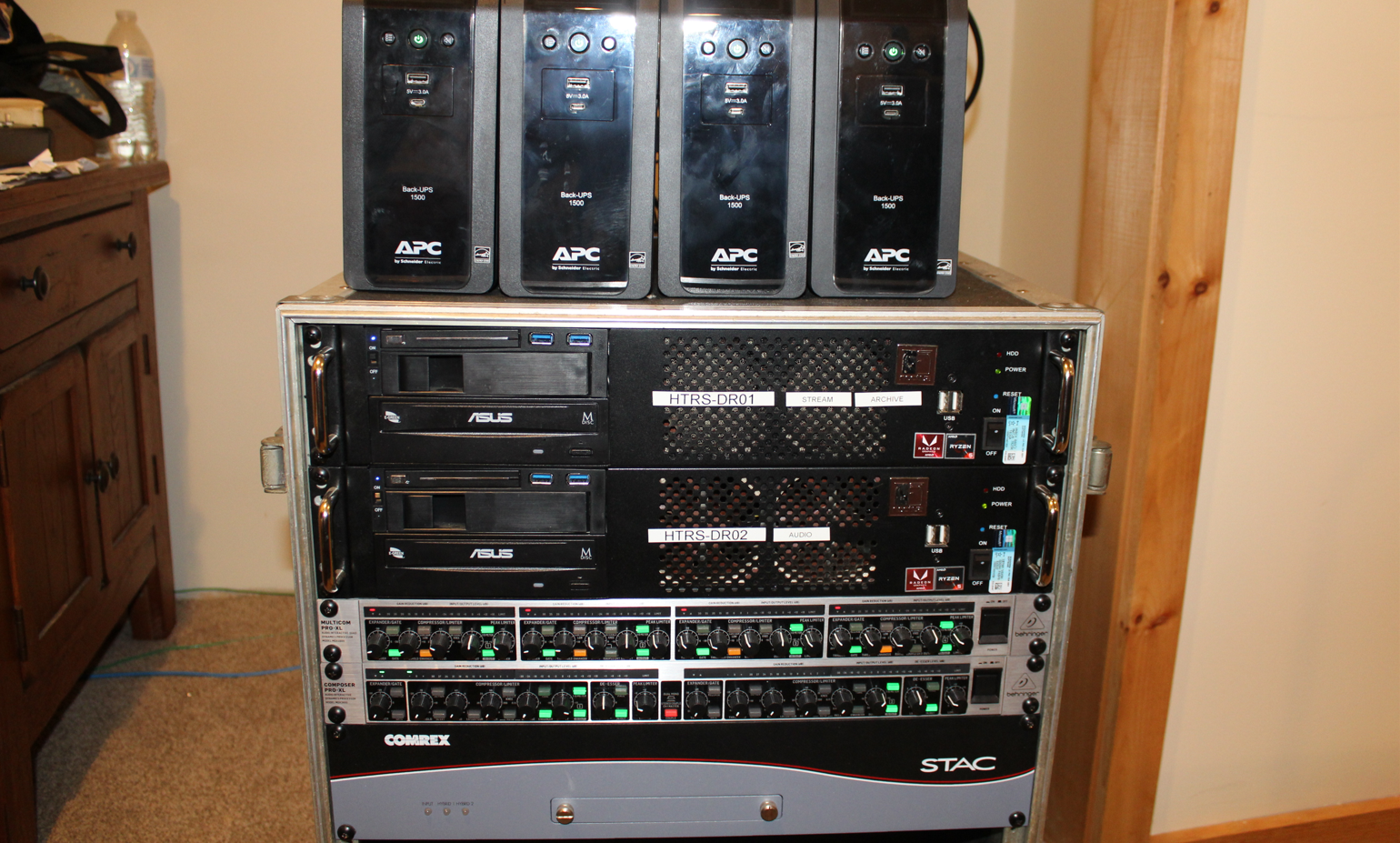Every night, when I'm on the air broadcasting to 70 countries around the world via Global High Frequency (shortwave) radio stations WBCQ and WRMI, this is where it all comes from . . .
Here is where I do my work:
I know the countryesque curtains are a bit odd, but remember, I inherited this house way out in rural Pennsylvania when my mom died, so we kept much of the country home interior as-is.
I speak into an Electrovoice RE-27n/d mic and wear Sennheiser HD650 headphones:
When I open the phone lines, your calls are all handled through a COMREX, "Stac6" broadcast telephone system. Here's the main phone control head:
All the audio for the show goes through a Mackie VLZ1202 Mixer board, and then out through the Eventide BD-600 Obscenity Delay, shown below:
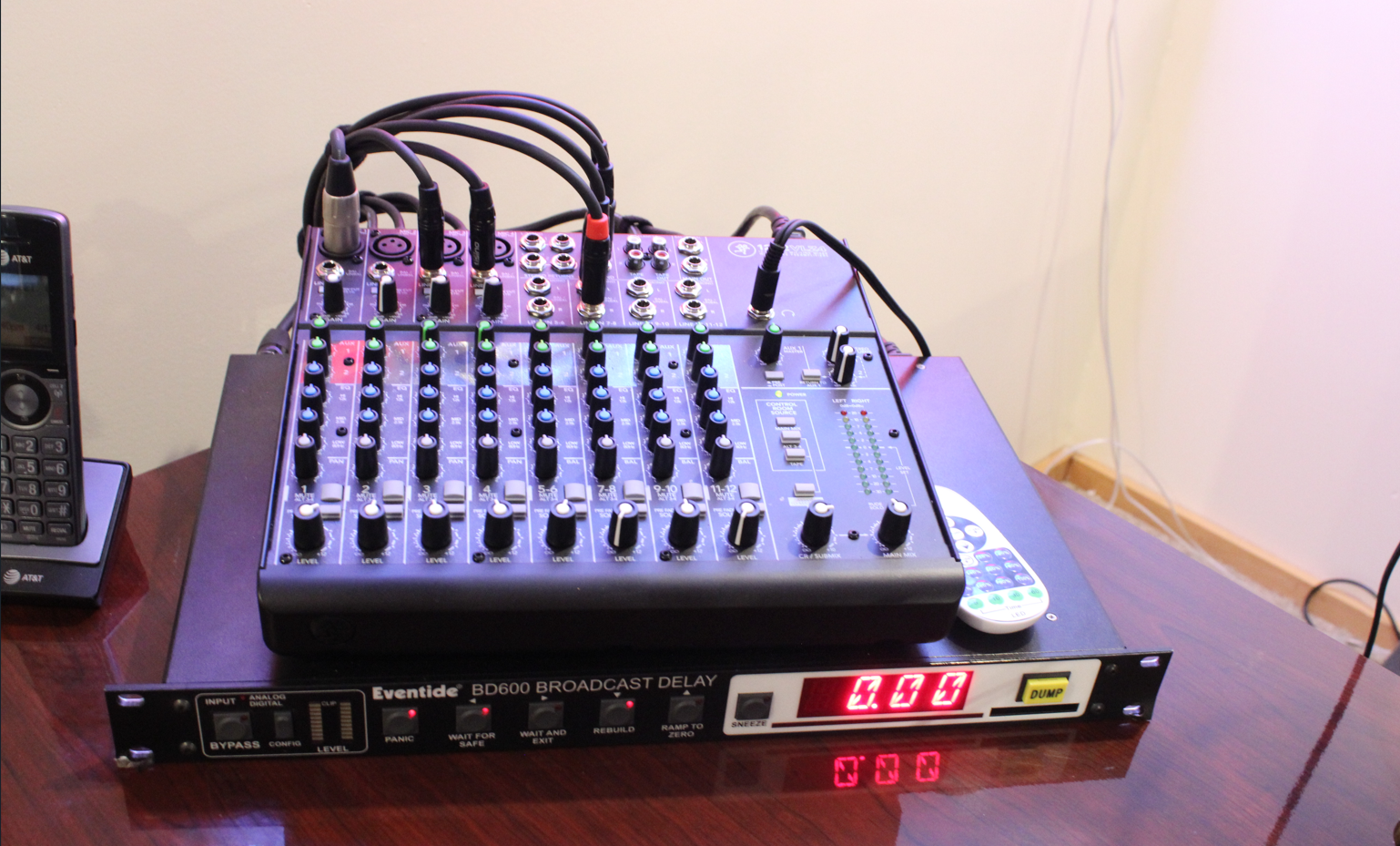
The audio is sent out to the computer rack, processed, compressed, or limited (if necessary) by Behringer audio compressors, then routed back to the Obscenity Delay, and finally, out to the streaming computers which you see at the top of computer rack.
On the very top of the rack are four Uninterruptible Power Supplies to make certain everything stays on if electrical power (out here in rural Pennsylvania) drops-out.
At the bottom of the rack is the functional main frame for the COMREX Broadcast Telephone System that your on-air calls come in through.
Upon leaving this room, the full radio show goes out over a network wire to the main router downstairs. Connected to that Router are:
1 Cable Modem
1 Cellular data modem
2 separate Satellite Uplink modems
Since Fiber Optic is not yet available here, I not only have to use a cable modem, I have to have "Fail-overs" in case a tree comes down and takes out the cable. Hence, a Cellular data modem with roof-mounted antenna, and two satellite uplinks.
All these devices have their own battery back-ups.
All this is necessary to not only be able to broadcast - even in the absence of electric power - but to make certain there are redundancies to back-up the outbound connectivity.
The back-up power supplies are designed to be able to supply a MINIMUM of 2 hours power for each device. So even if power were to go out at the very start of a two-hour (Wednesday night) show, the show would still go on even though the electric is off.
Yes, I have a gasoline-powered 12,000 watt (regular), 15,000 watt surge generator. But it's locked up and not always connected. So if power goes out, I want to avoid having to stop the show, run downstairs, unlock the generator, cart it to the generator inlet, and crank it up to power the house. With all these UPS back-ups, at least theoretically, I can avoid having to do that.
It took a lot of planning, and a lot of money, to set this all up and to keep it all running. That's the difference between a REAL radio show and some rinky-dink podcast. I am professional, all the way.
So that's where I work. I thought you might find it interesting.

